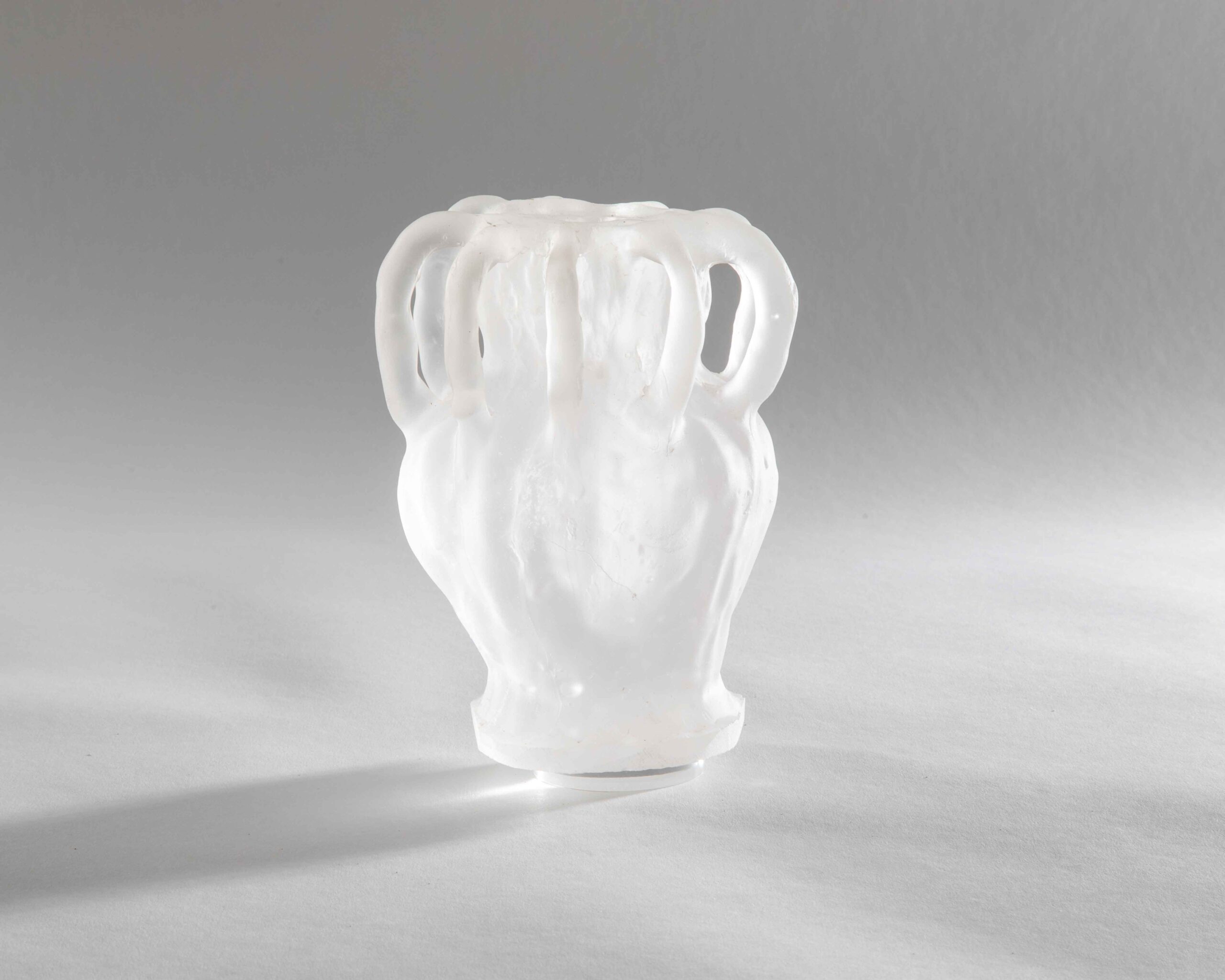The ouroboros is an ancient symbolic image of a serpent eating its own tail. It originates from the Greek oura meaning “tail” and boros meaning “devouring,” and represents the circular nature of metamorphosis and transformation. The oldest known ouroboros was discovered on a golden shrine in Egypt in the tomb of Tutankhamen in 13th Century BC, and refers to the mystery of cyclical time which flows back into itself. The ouroboros is the ongoing cycle of life-death-rebirth, and symbolic of infinity, eternal renewal, self-generation, and endless return. The loop represents the unity of beginning and end, and the image of the serpent devouring its own tail is a reference to the archetypal patterns of creation through destruction and order from chaos. The ouroboros was used by alchemists to denote the circuitous character of the magnum opus, the interconnectedness of the cosmos, and the union of opposing archetypal forces such as light-darkness, feminine-masculine, life-death, visible-invisible, chaos-order, conscious-unconscious through the transcendence of duality.

Ouroboros
Cast glass, 2020


Hidden Harmony
Glass, 2022

The Double Pelican
Glass, 2020
The Pelican, in alchemical terms, is a subtle operation vessel for repetitive ritual where circulatio, the fire stage in alchemy, takes place over and over again; akin to the familiar alchemical symbol of the ouroboros. While it is a distilling glass vessel, the distillate, instead of dripping down into the receiver, flows back into the belly of the retort. Archetypal psychologist James Hillman expands on this curious and unusual behavior of The Pelican noting that the head sends its product down again into the body, repeatedly. What arises to the head does not escape, rather, it is fed back into the vessel as further nourishment. It is the opus that must be fed, continued at all costs. One could interpret these circulatio currents of the Double Pelican as illustrating the process of conscious realization and the continuous reapplication of conscious insights to the unconscious experience. This alchemical vessel is a symbol of the sacred temenos in which we do the work of individuation, where we pass something through the conduits over and over again, reworking and refining the material until it transforms, until new visions emerge from the chaos. Staying in the alchemical quest is the quest. Struggling with the work is the work. And in times of massa confusa, or chaos, there are new structures of order that appear in the mess itself. This is what The Double Pelican reveals. Moreover, The Pelican takes on a more personal role in my mythological narrative as I’ve come to learn in my research that its symbolic imagery is featured on the family crest of my ancestors.

In Exitium Creaturae
Glass, 2020
Chrysanthemum winds
Of the Mojave
Seeds of a future wildfire
Gambel’s quail
Like galloping horses
The echo of the air
Dripping water
In the frozen spring
Toxic mold

Urn for Man o’ War
Glass, 2020
The tie between ash and returning to origin.
Ash is the final extract from life itself; the physical matter that can take no further decomposition or elemental breakdown. Thus, what inevitably follows the “ash operation,” which marks the end and signifies chaos and death, is the rise of the phoenix, or rather, a new bloom.
Jellyfish blooms are equal parts beauty and terror, and the Portuguese Man o’ War, costumed in inflated pastel sails of pinks, blues, and purples, are reminiscent of nautical vessels and have the capacity to sting well after death. This work is the re-storying of a personal encounter with a Portuguese Man o’ War bloom that left me poisoned and hospitalized, and in contemplation of my own mortality and the ceaseless death-rebirth constellations of my own life immediately following the death of my younger brother.

Green Cavern
Glass, 2020

Rebirth
Glass, 2019